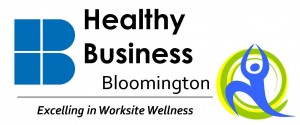Your Chamb er was proud to be the lead organizer for the I-69 Regional Summit…Driving Opportunity here in Bloomington on October 20-21. The Summit brought together more than 350 representatives from various sectors including business, government, higher education, defense, economic development, tourism, agriculture, trade and logistics to examine ways to enable collaboration and leverage the new and existing I-69 corridor from a statewide perspective.
er was proud to be the lead organizer for the I-69 Regional Summit…Driving Opportunity here in Bloomington on October 20-21. The Summit brought together more than 350 representatives from various sectors including business, government, higher education, defense, economic development, tourism, agriculture, trade and logistics to examine ways to enable collaboration and leverage the new and existing I-69 corridor from a statewide perspective.
The Chamber conceived the Summit for a series of reasons, but most importantly to have a forum for strategic discussions with respect to the impact and opportunities this new major infrastructure project will have on the business environment locally, regionally, statewide and nationally.
Highlights included a panel luncheon with Congressmen Todd Rokita, Larry Bucshon and Todd Young, who are all members of the I-69 Congressional Caucus, moderated by Gerry Dick of Inside INdiana Business. Keynote speakers Lt. Governor Sue Ellspermann and Becky Skillman, President and CEO of Radius Indiana, shared their vision and perspective. Attendees participated in breakouts and panel discussions on topics including trade/logistics, land use planning, understanding P3s, site selection and economic development. Other highlights included a tour of the Section 4 project and an evening reception at the IU Memorial Stadium.
The Summit provided a forum for interested parties and experts to come together, learn of the progress of I-69 in each of the corridor states, understand the global influence of its future and a chance to make new contacts. I was amazed at the significance this interstate will have for enabling trade and logistics from Mexico to Canada, and opening new avenues for connecting our region to the world. It is easy to see the local challenges and opportunities as the road pushes through, but a realistic view from 35,000 feet is necessary to be well prepared and take advantage of the opportunities the infrastructure brings to our region.
The State of Indiana also sees I-69 as the most impactful project for the tourism industry. Having interstate access to the State’s unique assets that attract visitors, is expected to generate new ways to capture travelers’ dollars in Indiana, expose a broader audience to these assets, and attract new business opportunities in this industry sector.
Locally, I-69 will bring safe and efficient connectivity for our businesses, employees and customers between Evansville and Indianapolis, not to mention Crane Naval Base. This will open new doors for employers to operate more effectively in the region, expand their employee base and capture additional business and residential investment.
The Summit was an excellent way for our Chamber to showcase our local businesses, connect them to other key contacts and open the door to see what Bloomington, Monroe County and the region have to offer.
It was a huge task for us to take on, but with the support of a great Committee, key partners like the Indiana Chamber of Commerce and Hoosier Voices for I-69, and our sponsors, this event puts us on the map on a broader scale as we move forward. A public thank you to all those who made this event possible and we look forward to hosting again in 2015, our Chamber’s 100th Anniversary!
If you are interested in more information from the Summit, you can access such at www.I69Summit.com or our Chamber website.








